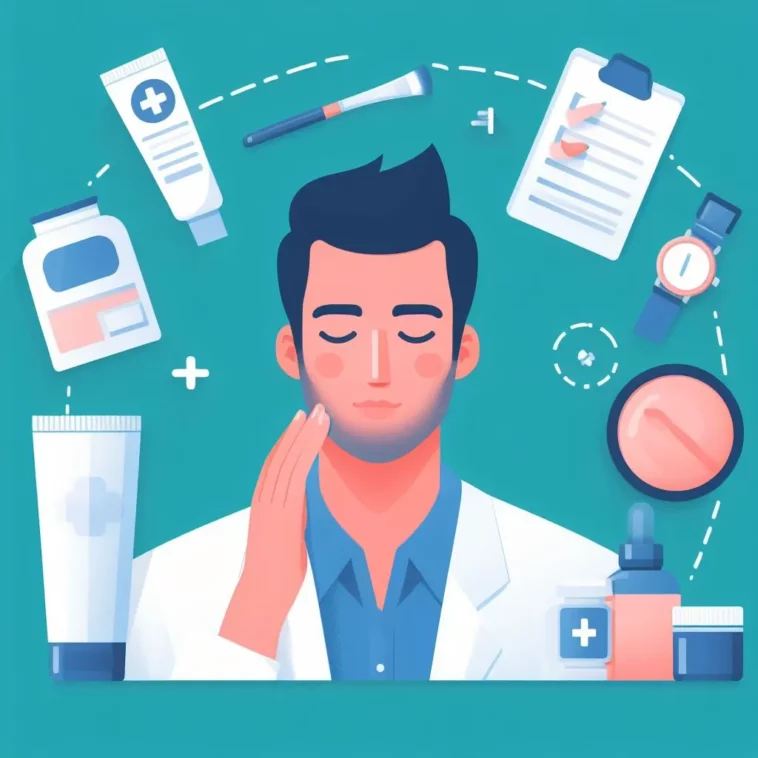how much is a dermatologist visit without insurance
If you are without insurance,and are wondering how much is a dermatologist visit without insurance? then you are in the right place!.
The cost of a dermatologist visit without insurance can vary depending on a number of factors, including the location of the practice, the type of visit (initial consultation, follow-up, etc.), and any procedures that are performed. However, on average, patients without insurance can expect to pay between $150 and $250 for an initial consultation and $80 and $175 for follow-up visits.

Here are some tips for saving money on a dermatologist visit without insurance:
- Ask about discounts for self-pay patients. Many dermatologists offer discounts to patients who pay for their visits out-of-pocket.
- Look for sliding scale clinics. Sliding scale clinics charge patients based on their income. This makes it possible for patients with low incomes to receive affordable healthcare.
- Use a telemedicine service. Telemedicine services allow you to see a doctor remotely, via video chat or phone call. This can be a good option if you live in a rural area or have difficulty traveling to a dermatologist’s office. Telemedicine services often charge less than traditional in-office visits.
- Negotiate with your doctor. If you are unable to afford the full cost of your visit, you may be able to negotiate a payment plan with your dermatologist. Be sure to discuss this option with your doctor before your appointment.
If you need to see a dermatologist and do not have insurance, it is important to do your research to find the most affordable option for you. By following the tips above, you can save money on your visit and get the care you need.
There are a number of ways to save money on a dermatologist visit:
- Ask about discounts for self-pay patients. Many dermatologists offer discounts to patients who pay for their visits out-of-pocket. Be sure to ask about this when you schedule your appointment.
- Look for sliding scale clinics. Sliding scale clinics charge patients based on their income. This makes it possible for patients with low incomes to receive affordable healthcare. To find a sliding scale clinic in your area, you can search online or contact your local health department.
- Use a telemedicine service. Telemedicine services allow you to see a doctor remotely, via video chat or phone call. This can be a good option if you live in a rural area or have difficulty traveling to a dermatologist’s office. Telemedicine services often charge less than traditional in-office visits.
- Negotiate with your doctor. If you are unable to afford the full cost of your visit, you may be able to negotiate a payment plan with your dermatologist. Be sure to discuss this option with your doctor before your appointment.
Tips for Finding a Dermatologist Who is Affordable
Here are a few tips for finding a dermatologist who is affordable:
- Ask your primary care doctor for a referral. Your primary care doctor may be able to refer you to a dermatologist who is accepting new patients and offers discounts for self-pay patients.
- Check with your local insurance company. If you have insurance, check with your insurance company to see if they have a preferred provider list (PPO). PPOs typically have a network of doctors who offer discounted rates to their members.
- Look for dermatologists who offer discounts for self-pay patients. Many dermatologists offer discounts to patients who pay for their visits out-of-pocket. You can find dermatologists who offer discounts by searching online or contacting your local health department.
- Search for sliding scale clinics in your area. Sliding scale clinics charge patients based on their income. This makes it possible for patients with low incomes to receive affordable healthcare. To find a sliding scale clinic in your area, you can search online or contact your local health department.
What to Expect During Your First Dermatologist Visit
During your first dermatologist visit, you can expect the following:
- Your dermatologist will ask you about your medical history and any concerns you have about your skin.
- They will perform a physical examination of your skin, hair, and nails.
- If necessary, they may order additional tests, such as a biopsy or skin culture.
- Once they have a diagnosis, they will discuss treatment options with you.
Tips for Getting the Most Out of Your Dermatologist Visit
Here are a few tips for getting the most out of your dermatologist visit:
- Be prepared to answer your dermatologist’s questions about your medical history and skin concerns.
- Bring a list of any medications you are taking, including over-the-counter medications and herbal supplements.
- Ask questions about your diagnosis and treatment options.
- Follow your dermatologist’s instructions carefully.
Additional Tips for Saving Money on a Dermatologist Visit Without Insurance
- Consider using a generic medication. If your dermatologist prescribes a medication, ask them if there is a generic version available. Generic medications are just as effective as brand-name medications, but they are often much cheaper.
- Shop around for prescription drugs. You can compare prices for prescription drugs at different pharmacies using a website like GoodRx.
- Ask your dermatologist about samples. Some dermatologists have samples of medications that they can give to patients. This can be a good way to try a new medication without having to pay for it upfront.
- Look for coupons and discounts. Many pharmaceutical companies offer coupons and discounts on their medications. You can find coupons on the company’s website or by searching online.
- Apply for financial assistance. There are a number of organizations that offer financial assistance to patients who cannot afford their prescription medications. You can find a list of these organizations on the website of the National Organization for Rare Disorders (NORD).

How to Find a Sliding Scale Clinic
To find a sliding scale clinic in your area, you can:
- Search online for “sliding scale clinics near me.”
- Contact your local health department.
- Ask your primary care doctor for a referral.
- Check with the National Association of Free and Charitable Clinics (NAFC).
Once you have found a few sliding scale clinics in your area, you can call them to learn more about their services and to see if they are accepting new patients.
How to Apply for Financial Assistance
There are a number of organizations that offer financial assistance to patients who cannot afford their prescription medications. To apply for financial assistance, you can visit the organization’s website or call their customer service department.
Here are a few organizations that offer financial assistance for prescription medications:
- Patient Assistance Network (PAN) – Offers help with funding for medical treatments.
- NeedyMeds – Provides information on medication and healthcare cost assistance programs.
- RxAssist – Offers a comprehensive database of patient assistance programs.
- GoodRx – Compares prescription drug prices and offers coupons.
- The National Organization for Rare Disorders (NORD) – Provides support for individuals with rare diseases, including medication assistance programs.
To apply for financial assistance, you will typically need to provide information about your income, your household size, and your medical expenses. You may also need to provide a copy of your prescription.
Once you have submitted your application, the organization will review it and determine if you are eligible for assistance. If you are approved for assistance, the organization will work with you to provide you with the medication you need at a discounted price or for free.
FAQs
Q: What insurance plans cover dermatology visits?
A: Most insurance plans cover dermatology visits, but there may be some variations in coverage. It is important to check with your insurance company to see what your specific coverage is.
Q: What is a sliding scale clinic?
A: A sliding scale clinic is a type of clinic that charges patients based on their income. This makes it possible for patients with low incomes to receive affordable healthcare.
Q: How do I find a sliding scale clinic in my area?
A: To find a sliding scale clinic in your area, you can search online or contact your local health department.
Q: What can I do if I cannot afford the cost of a dermatologist visit?
A: If you cannot afford the cost of a dermatologist visit, there are a number of things you can do. You can ask your dermatologist about discounts, look for sliding scale clinics, use a telemedicine service, or negotiate a payment plan with your dermatologist. You can also apply for financial assistance from organizations that help patients who cannot afford their prescription medications.
Conclusion
Even if you do not have insurance, there are a number of ways to save money on a dermatologist visit. By following the tips above, you can make sure that you are getting the best possible care at an affordable price.
The cost of a dermatologist visit without insurance can vary, but patients can expect to pay between $150 and $250 for an initial consultation and $80 and $175 for follow-up visits. There are a number of ways to save money on a dermatologist visit without insurance, such as asking about discounts, looking for sliding scale clinics, and using a telemedicine service.
Even if you do not have insurance, there are a number of ways to save money on a dermatologist visit and to get the medication you need at an affordable price. By following the tips in this article, you can make sure that you are getting the best possible care for your skin.
References
- American Academy of Dermatology: https://www.aad.org/
- Mayo Clinic: https://www.mayoclinic.org/departments-centers/dermatology/sections/overview/ovc-20420526
- WebMD: https://www.webmd.com/skin-problems-and-treatments/psoriasis/dermatologists
Related topics:
- How to find affordable life insurance if you have a chronic health condition
- How to get business insurance if you have a high-risk job
- Types of insurance available for people with pre-existing conditions
- what companies are in the consumer durables field
- what insurance company covers mounjaro
- How to get approved for insurance if you have a pre-existing condition
- Tips for managing your insurance costs if you have a pre-existing condition



